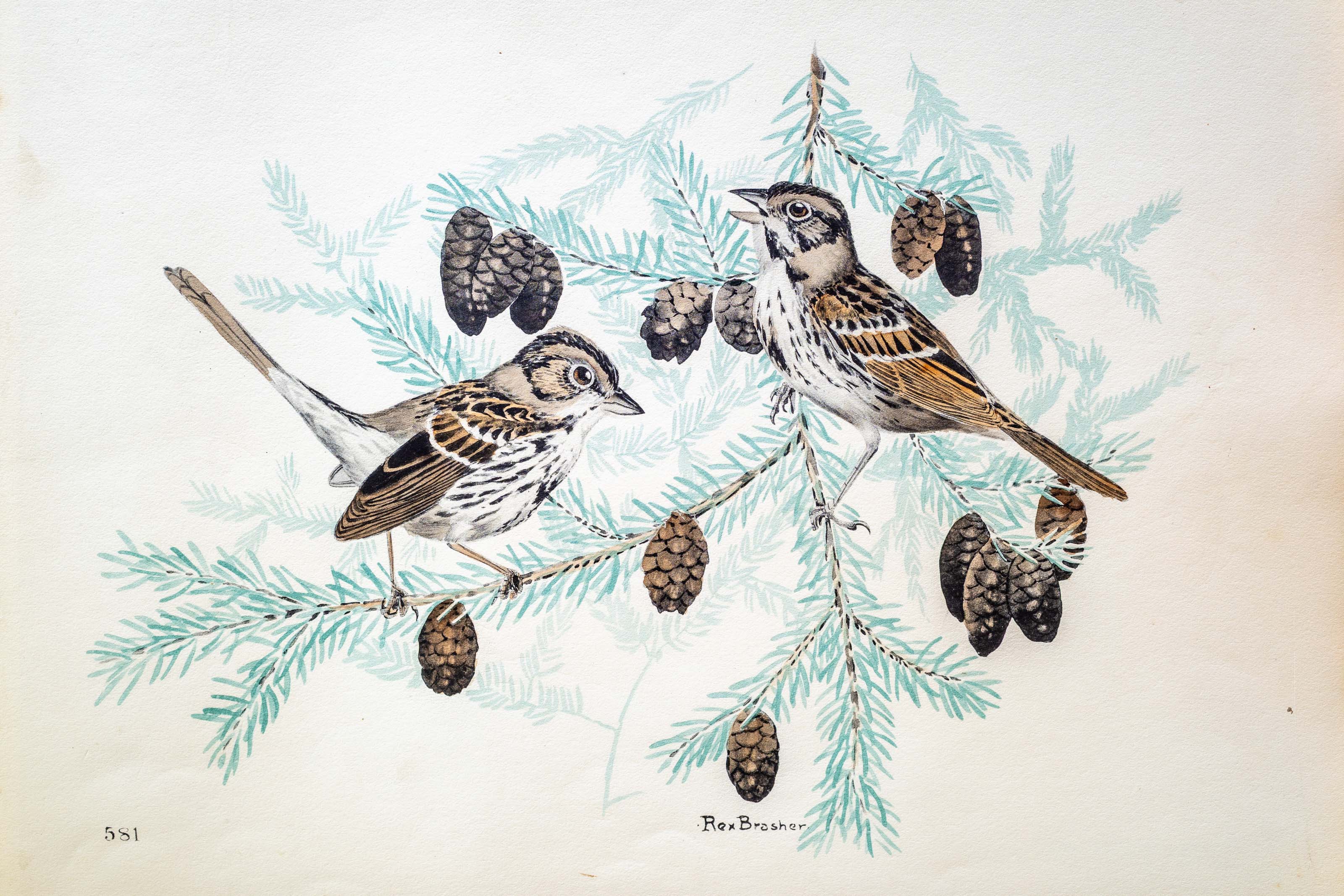






Unknown
1930
10
581
A team of dedicated board members, volunteers, and student interns has published every page in Volume 9. This volume includes 360 images of paintings and lyrical descriptions of birds, now available online for everyone to enjoy anywhere in the world. This is a monumental task. Each volume requires approximately 400 hours to photograph, edit, transcribe, catalog, and publish online. We need your support to complete this work.
If you're tech-savvy, have a good eye, are meticulous with details, and love structured data, please consider volunteering by emailing us at hello@rexbrasher.org.
We encourage all bird lovers and supporters to consider a monetary donation to support our mission to make Rex's work available for everyone. You can provide a one-time or recurring donation online.
A misty valley with dim March sun wanly touching pale yellow branches of the old willows. Altho a few scattered snowpatches linger the morning is not cold and thru the silvery light come the first SONG SPARROW'S tinkling notes. There he sits upon an alder top, magnified to robin size, his head thrown back, his throat quivering with the old refrain.
Listening, I released the reins of memory. — I was standing on the porch of a Babylon hotel (where my father had taken me for one of their famous shore dinners), watching a brown bird singing. Then a tremendous concussion directly behind startled me so that I jumped off that porch and into the bush. A negro waiter with a sense of humor (?) had sounded the dinner call on a heavy iron pan.
There has not been a Spring in the ensuing half century when the Song Sparrow's reveille has gone unheard. Even when life was urban a trip was always made to the outskirts especially to hear the gallant little birds — and I was never disappointed. An interesting characteristic is the wide variation of their song. We watch eagerly every Spring for our particular bird and are glad when his clipt notes assure us that the "dangers of field and flood" have been successfully eluded once more. He has been with us for six years (1929) and that is nearly the full span of a Sparrow's life.
My favorite bird? — Song Sparrow, of course, because he possesses all the admirable traits for which humanity is still struggling. In fact I have two favorites: "Silvertongue" in summer; Chickadee, in winter.
NEST: usually of dried grass and leaves, lined with fine grass and hair; located under shelter of tussock on ground but frequently in old tree cavities or in small dense bushes five or six feet above ground.
EGGS: 4 to 5; pale green thickly spotted with brown and lavender. Breeding of subspecies, similar.
North America east of Rockies from about parallel 55 southward.
Distributed from Labrador to the Mackenzie River, crossing the Rocky Mountains into Central Alaska; southward to northern Virginia, central Wisconsin and Michigan. One of the most abundant and largest coniferous trees in Canada; less common in the United States.